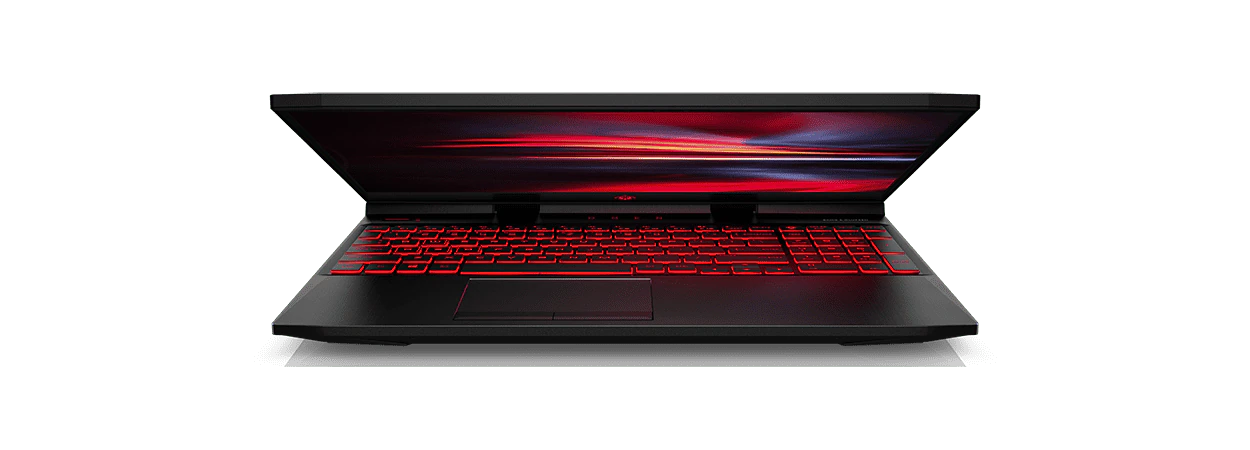Thank you for visiting the HONG KONG HP Store
-
Contact Us
CONTACT USChat with us
- Our specialist are here to help
- Live chat
- Sales
- 85264507529(WhatsApp)
-

- Post Sales
- 85230016720(WhatsApp)
Mon-Fri 8.30am - 5.30pm
(exc. Public Holidays)
Live product demo
Store finder Locate our storesSubmit feedback We value your opinion! - Location
- My Account
How to Fix a Laptop That Won't Charge


In today’s fast-paced Hong Kong lifestyle, your laptop is your digital lifeline, keeping you connected whether you’re in Central, working from home in Kowloon, or enjoying a weekend in Lantau. You rely on your laptop’s battery to keep you productive throughout the day, but what happens when it suddenly stops charging?
When you plug your laptop into a power source, you usually hear a reassuring chime or see a tiny LED light indicating all is well. However, if connecting your laptop’s AC adapter brings no such response, something may be seriously wrong.
While a non-charging laptop can be frustrating, especially when you’re trying to meet deadlines or stay connected in Hong Kong’s bustling environment, don’t assume it requires an expensive repair just yet. This guide will help you understand why your laptop battery won’t charge and provide 8 helpful tips to fix it, tailored for Hong Kong users.
Why did my laptop battery stop charging?
Before attempting to fix your laptop, it’s essential to understand why it stopped charging. While there are many potential causes, we’ve narrowed it down to three main culprits: power cord issues, software malfunction, and declining battery health.
Power cord issues
Hong Kong’s compact living spaces often mean setting up your workspace in creative ways, which can lead to power cords being bent or twisted to accommodate far-away outlets. This frequent manipulation can damage your charging cable over time.
Several components work together to power your laptop. Many PC chargers have a two-in-one AC adapter: one piece connects to the wall, and another connects to your computer. If both are securely connected and your PC’s charging light doesn’t illuminate, you may have a faulty or damaged cord.
Software malfunction
Windows 11, found on many HP laptops available in Hong Kong, is highly self-sufficient. It can diagnose internal problems and initiate important updates to keep your software current. However, it can occasionally miss things.
Your computer’s settings might be configured to shut down at a low battery level or enter sleep mode after a short period of inactivity. While these aren’t exactly “malfunctions,” they can appear to be.
Software issues can also arise when your computer’s drivers become outdated. An old driver might cause your computer to reject your AC adapter’s power. Reinstalling the battery driver is often a quick and easy fix for this problem.
Declining battery health
Like any technology, laptop batteries don’t last forever. One of the most common reasons for a laptop battery to stop charging is its declining health. Just as an old smartphone struggles to hold a charge, an aging laptop battery faces similar issues.
Before complete battery failure, you might notice your laptop:
- Overheats while charging
- Loses charge quickly
- Takes longer to fully charge
These are clear signs that your battery is aging.
How to fix a laptop that won’t charge
Now, let’s dive into troubleshooting. With these 8 tips, you may be able to solve the problem yourself, saving time and potentially avoiding a trip to a repair shop in Wan Chai or Mong Kok.
1. Check to see if you’re plugged in
It may sound obvious, but it’s worth checking if your laptop and charger are actually plugged in properly. There’s no hope of charging a disconnected laptop, so double-check all connections.
Examine each contact point, from the wall outlet to the AC adapter, and from the adapter to your laptop port. Everything should be tightly plugged in with minimal movement. Don’t forget to check that the battery is firmly seated in your laptop frame if it’s removable.
Also, ensure the problem isn’t with the outlet itself. Power surges are common in Hong Kong, especially during typhoon season, so try another outlet or reset the surge protector after confirming all contact points are secure.
2. Confirm you’re using the correct port
Modern laptops, like the HP Spectre x360 14-eu0014TU, often feature USB-C ports. While these ultra-thin ports are great for slim designs, they can be confusing for new users due to their multi-purpose functionality.
Computers with two USB-C ports typically have specific functions for each. Generally, one is for charging, and the other is for data transfer. If your laptop charger is plugged into the data-transfer port instead of the charging port, no charging will occur.
Ensure your cords are in their designated ports before assuming there’s a hardware problem.
3. Remove the battery
If your laptop has a removable battery, follow these steps:
Step 1. Remove any bolts or screws and take out the battery
Step 2. Hold the power button down for 10-15 seconds
Step 3. Plug the charger in
Step 4. Power the PC on
If your laptop turns on without issues, the problem likely lies with the battery, not the charger. To confirm, reinstall the battery and try booting up again.
For laptops without removable batteries, like many modern HP laptops, you may need to consult a professional who can open the hardware and run diagnostics.
4. Examine your power cords for any breaks or unusual bending
Power cords are delicate and sensitive components that may be the culprit behind your charging issues. Examine your power cords by feeling along their length for any unusual bends, breaks, or warping that might indicate physical damage.
If you discover that your cord has been damaged, perhaps from getting caught in a desk drawer or accidentally run over by an office chair, replacing the affected part of the power cord will be your easiest solution.
5. Update your drivers
Sometimes, all your PC needs is a quick driver update to restore it to full health. Follow these steps to update your Windows laptop’s battery drivers:
Step 1. Right-click the Start menu to open the Quick Access menu and select Device Manager
Step 2. Under Batteries, open the drop-down menu and right-click Microsoft ACPI Compliant Control Method Battery
Step 3. Within the new selection window, press Update Driver
Windows will ask, “How do you want to search for drivers?” You can let Windows search automatically or browse your PC manually for the appropriate software.
Once updated, reboot your PC and try charging again.
6. Survey the health of your charging port
Plugging your AC adapter into the laptop’s power connector should be straightforward and snug. If you face any difficulty, whether it’s dust build-up or a loose fit, your problem likely stems from an insecure connection between your adapter and computer.
If your PC jack is dirty, try cleaning out your AC power port with a toothpick or compressed air. If the connector feels loose, the problem may be more serious. This could indicate that your power jack has detached from the internal chassis. For this issue, it’s best to visit a computer repair shop in Hong Kong for a quick and affordable solution.
7. Let your PC cool down
Batteries generate heat while powering your laptop, but overheating can cause a host of problems. Rising battery temperatures may lead to sensor malfunctions, which can incorrectly signal to your system that the battery is either fully charged or missing.
If your laptop feels exceptionally hot while plugged in, place it on a cool, open surface with nothing blocking the fans and let it cool down. Once it’s completely cooled and comfortable to touch, try charging it again.
8. Seek professional assistance
If you’ve tried all these troubleshooting tips without success, your next best option is to seek professional help. Computers are complex machines and sometimes require expert attention for repairs and configuration.
For HP laptops purchased in Hong Kong, you can contact HP Support to get in touch with knowledgeable professionals who can help with your specific model. If you need immediate in-person assistance, consider scheduling an appointment with a reputable tech repair service in your area, such as those found in Sham Shui Po’s Golden Computer Arcade or Wan Chai Computer Centre.
Conclusion
A non-charging laptop can be a significant inconvenience, especially in Hong Kong’s fast-paced work environment. However, with these troubleshooting tips, you may be able to resolve the issue quickly and get back to your tasks. Remember to regularly check your laptop’s battery health and consider upgrading to a newer model like the HP Pavilion x360 14-ek1025TU if your current laptop is showing signs of age. With proper care and maintenance, your laptop can continue to be a reliable work companion in Hong Kong’s dynamic business landscape.
- Our specialist are here to help
- Live chat
- Sales
- 85264507529(WhatsApp)
-

- Post Sales
- 85230016720(WhatsApp)
Mon-Fri 8.30am - 5.30pm
(exc. Public Holidays)
Live product demo








